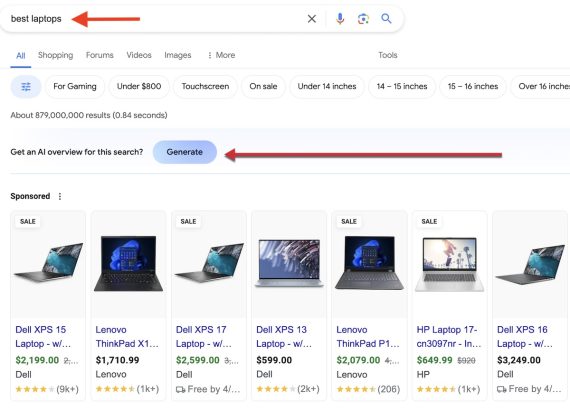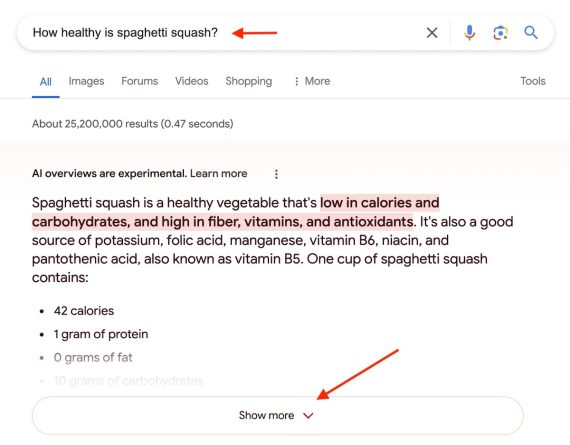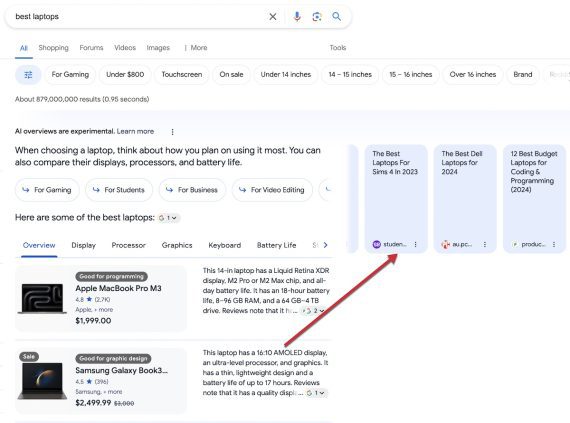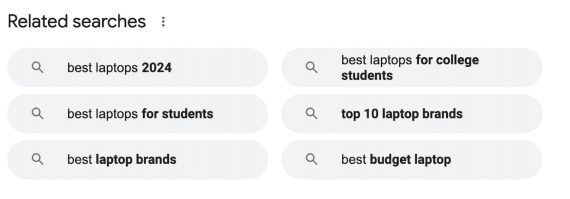Google extended Search Generative Experience last month beyond Labs, its testing program. A limited number of searchers now see AI snapshots in results regardless of whether they signed up.
Many observers believe it’s the first step to SGE becoming fully public this year. Google hasn’t much changed SGE in Labs for months, perhaps signaling its satisfaction thus far.
I’ve closely monitored SGE developments. Here are my observations and expectations.
Traffic Losses Overestimated
Authoritas, a search-engine-optimization platform, has been testing SGE in Labs and publishing the results. In March, the tests found the SGE appears in 91% of U.S. search results for brand and product terms in two ways.
First, the results could contain a “Generate” button that produces an AI-powered answer only when clicked, such as this query of “best laptops.”


Clicking the “Generate” button produces AI-powered answers. Click image to enlarge.
Second, the search results could contain an instant answer, such as the example below for “How healthy is spaghetti squash?” Clicking “Show more” expands the explanation.


Instant SGE answers such as this example appear automatically. Clicking “Show more” expands the explanation. Click image to enlarge.
The instant answer takes much more SERP space and will likely steal more clicks from organic listings because it pushes them further down the page.
Fortunately, according to the same Authoritas study, clicks on the “Generate” button drive 81.4% of SGE responses, much more than an instant answer. This indicates that organic listings won’t be hugely impacted, at least for now, since there’s no page disruption unless the button is clicked.
Organic Listings Displaced
However, when SGE is triggered, organic results appear far below the initial screen.
For example, searching for “smart TV” and clicking “Generate” produces an AI answer that occupies an entire screen on mobile and desktop.
Authoritas estimated an average organic listings drop of 1,243 pixels, depending on the search term. SGE results more or less eliminate the visibility of organic listings, especially for queries seeking consumables such as household goods.
Even before SGE, organic visibility was increasingly limited owing to the various features Google inserts at or near the top, such as ads, “People also ask” boxes, image packs, local packs, and more.
Opportunities in SGE
The good news is that SGE answers contain links, an opportunity for organic visibility. Authoritas states that SGE’s snapshots, on average, contain five unique links, and just one matches the top 10 organic listings below it. Perhaps it’s because the snapshots often address related queries.
For example, SGE snapshots for the search of “best laptops” list many makes and models as well as links for the best laptops for students, budgets, and coding. Organic listings for “best laptops” do not include those additional choices.


SGE snapshots for “best laptops” list many makes and models as well as related links, such as “The Best Laptops for Sims 4” (for students). Click image to enlarge.
Thus after optimizing important keywords, consider creating supporting content for related queries, increasing the chances of showing up in SGE results. For ideas, keep an eye on “Related searches” because those keywords seem to appear in SGE.


“Related searches” keywords seem to appear in SGE.



